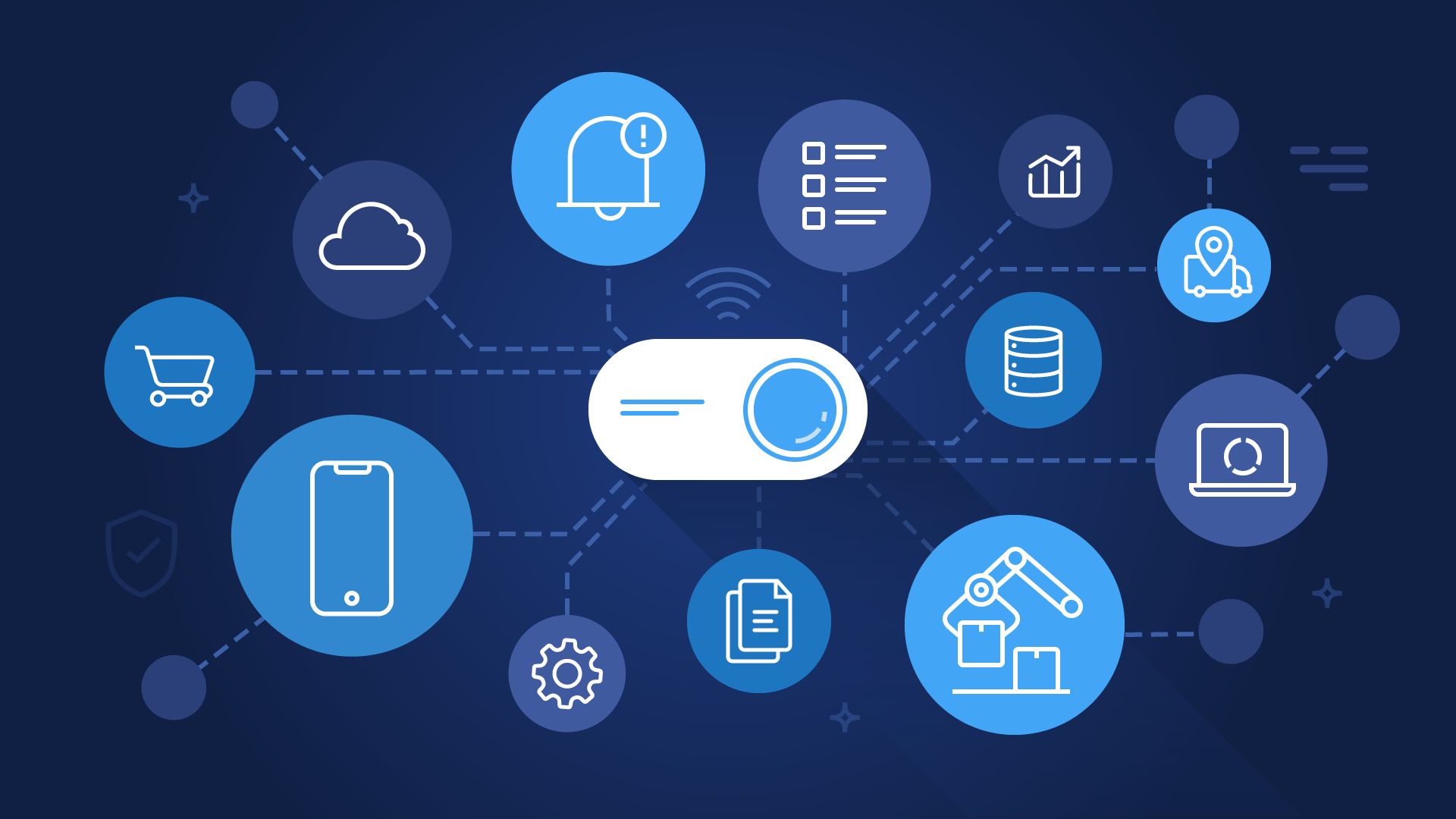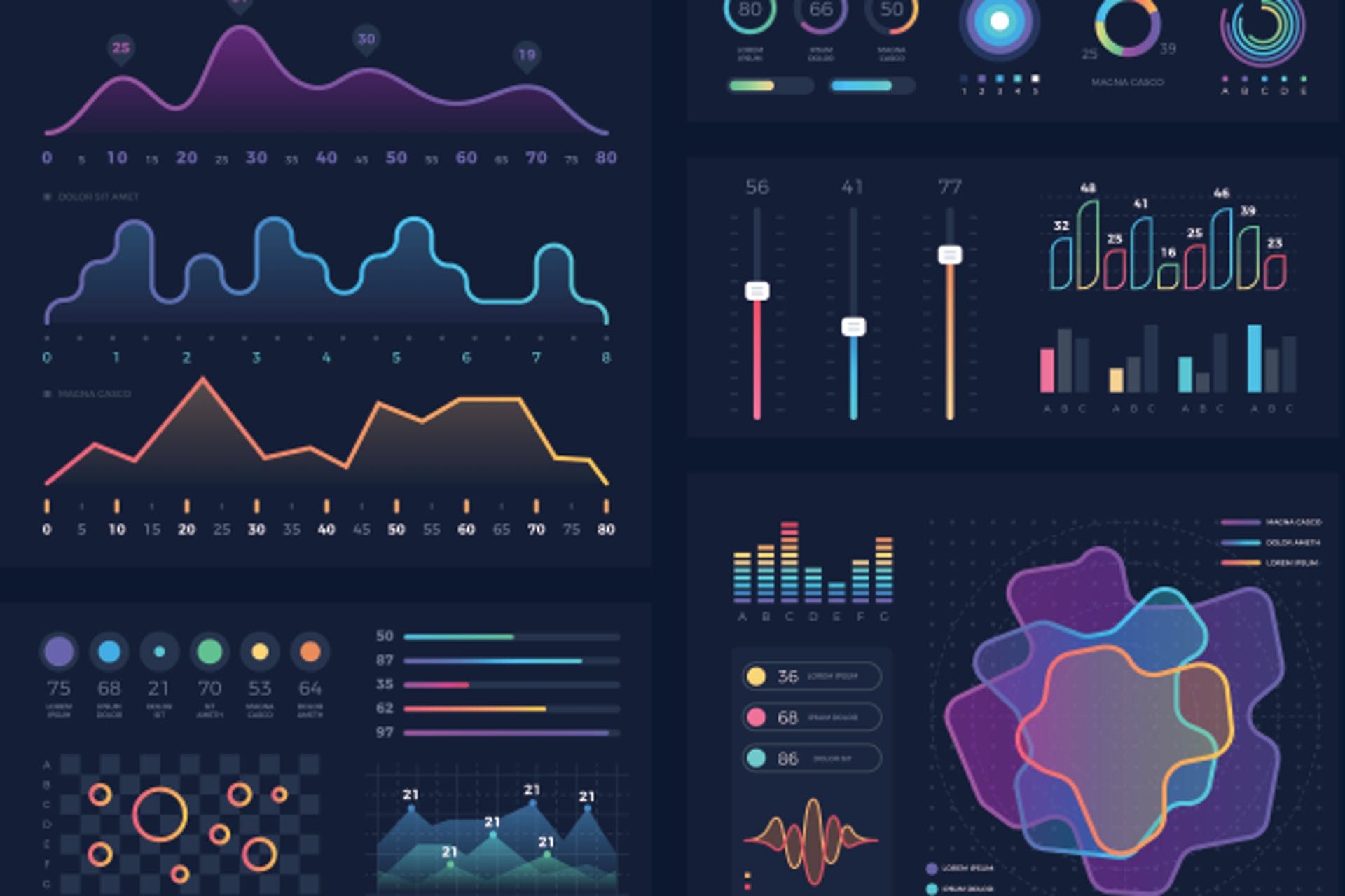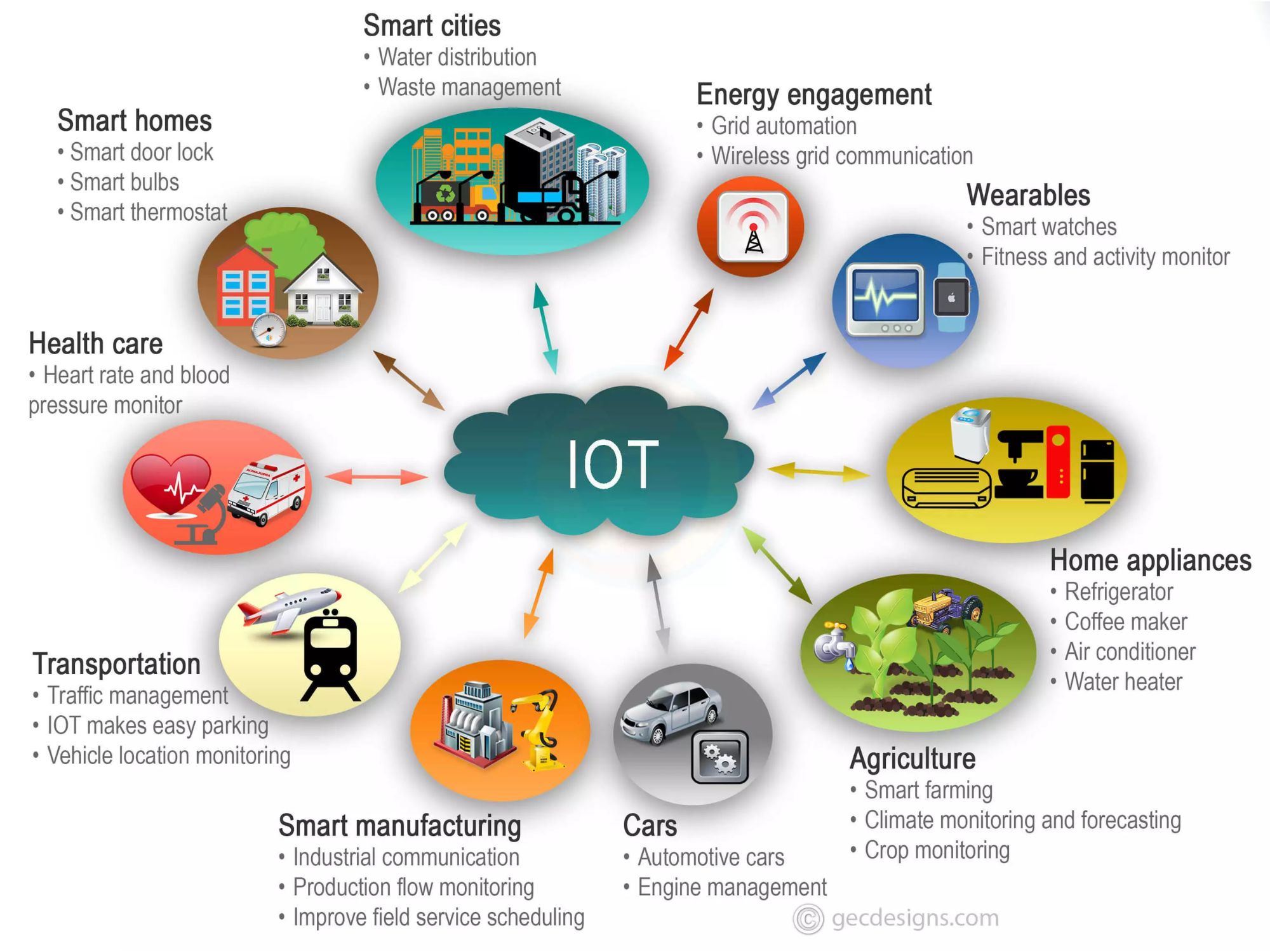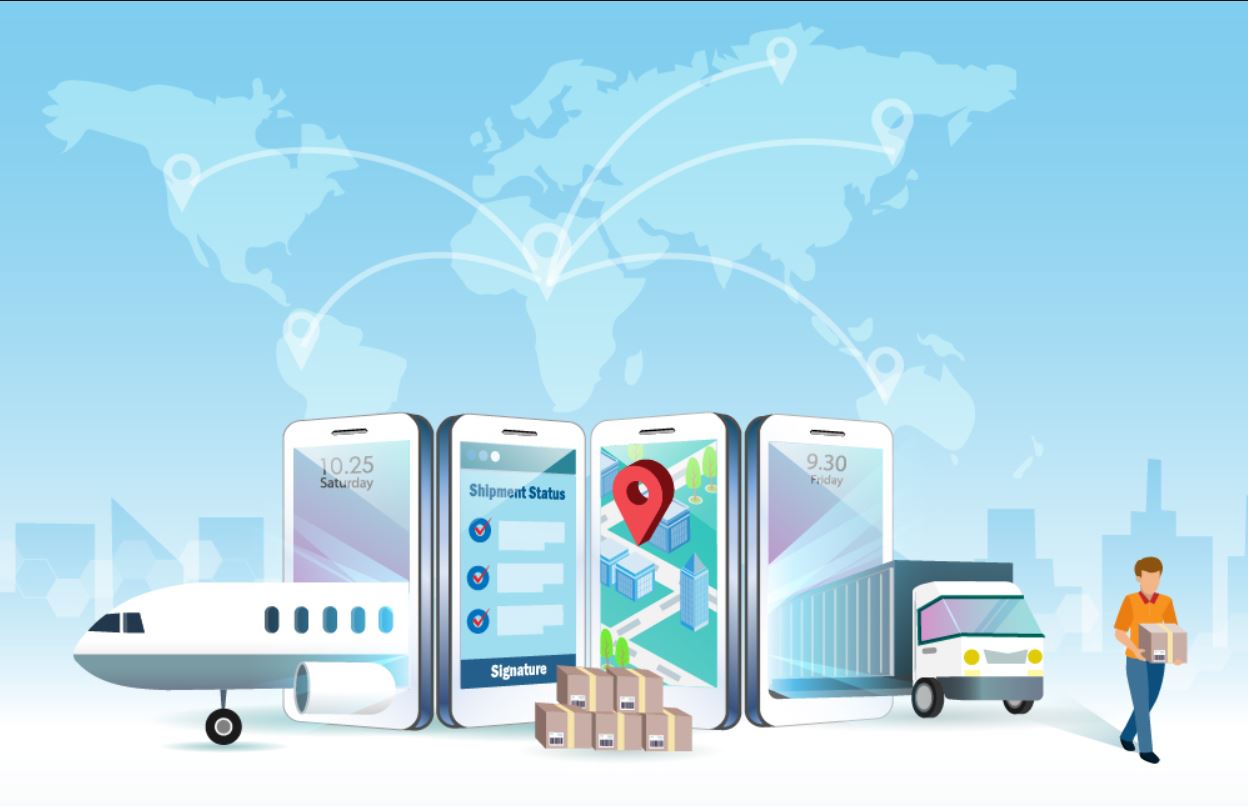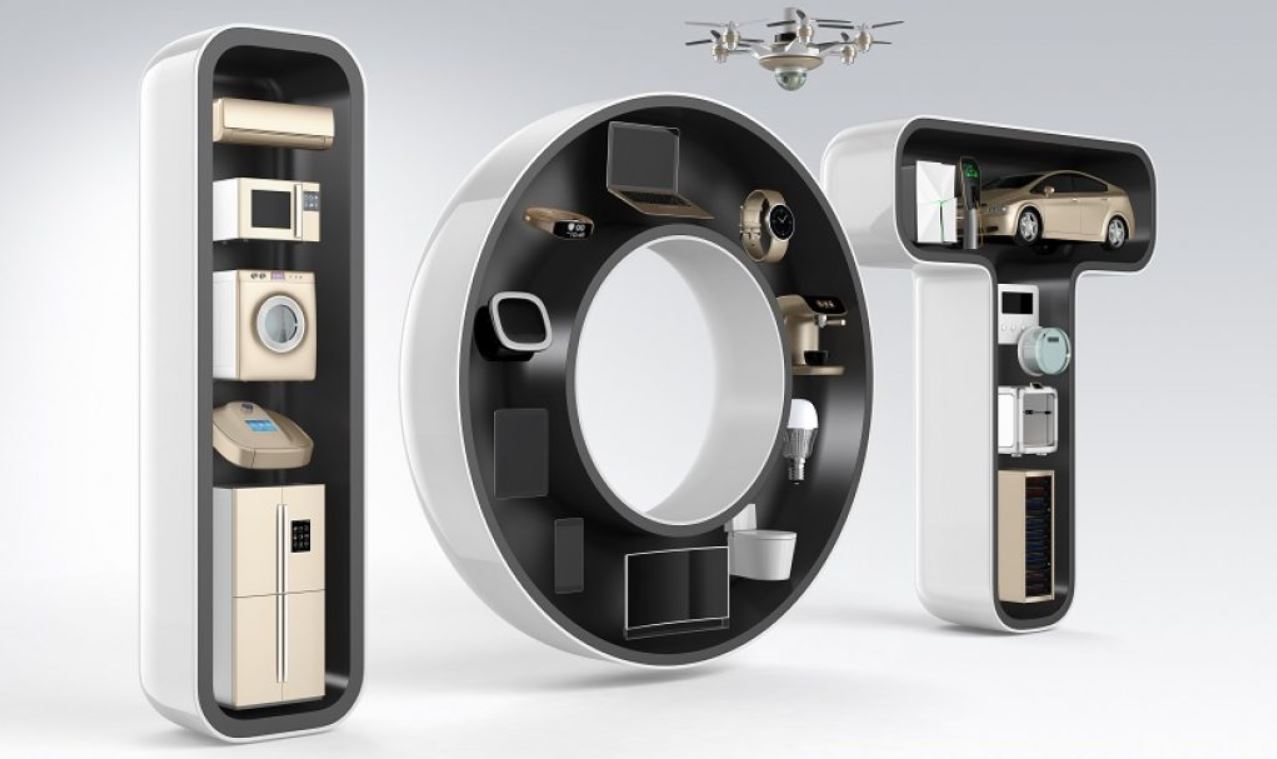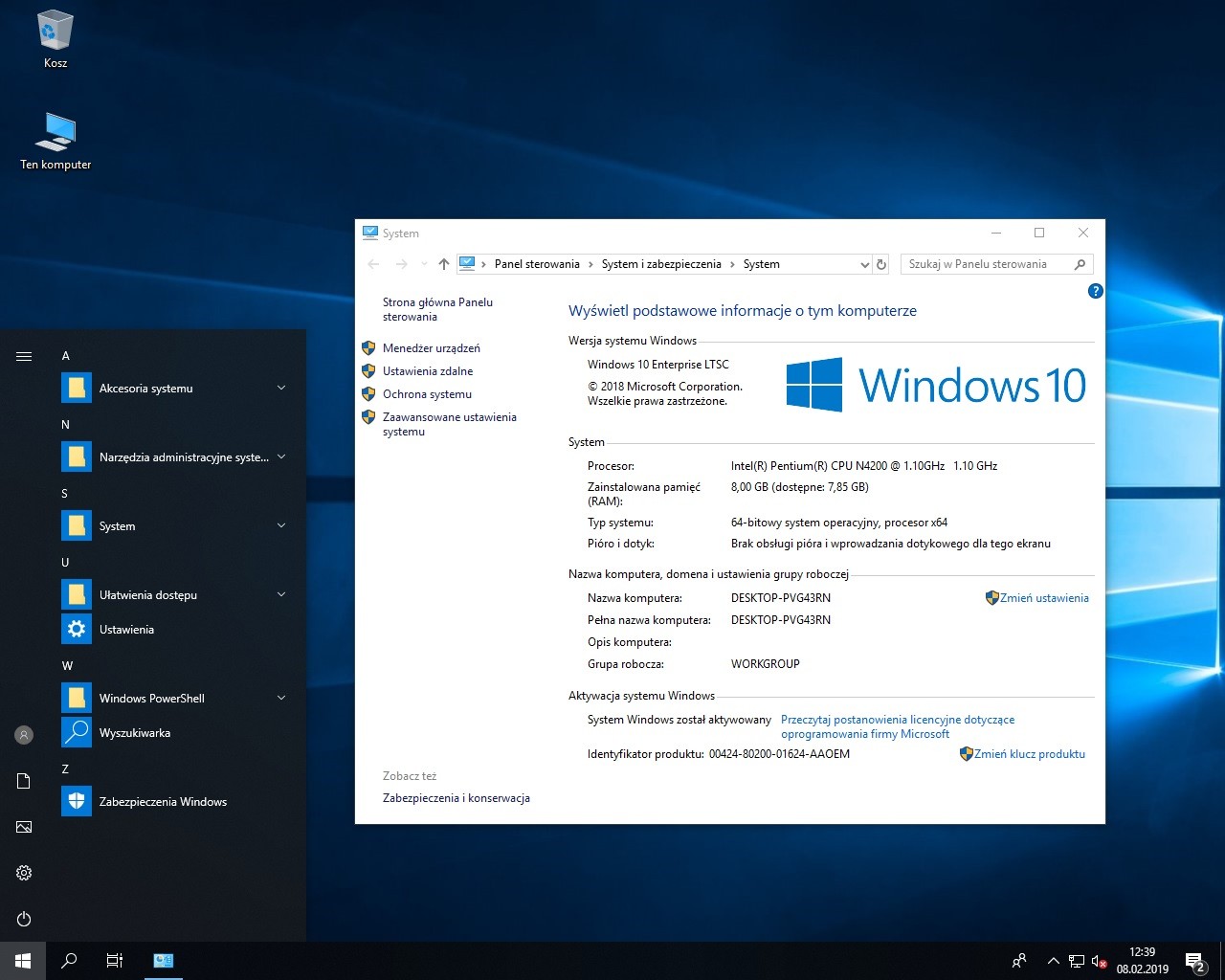Introduction
The adoption of Internet of Things (IoT) devices has been steadily increasing across various industries. From smart homes to industrial applications, organizations are embracing IoT technology to drive efficiency, enhance productivity, and gain a competitive edge. IoT devices are interconnected objects, equipped with sensors and network connectivity, that can collect and exchange data seamlessly.
The potential benefits of IoT devices are abundant, and organizations are motivated to invest in them for several reasons. This article will explore the driving factors behind organizations’ decisions to purchase and implement IoT devices, highlighting the advantages they bring.
By leveraging IoT devices, organizations can achieve increased efficiency and productivity. These devices automate routine tasks and streamline operations, reducing human errors and freeing up valuable time. For example, in manufacturing plants, IoT-enabled machines can communicate with each other to optimize production processes and minimize downtime.
Cost savings are another compelling reason for organizations to invest in IoT devices. These devices can help with energy management, predictive maintenance, and inventory optimization, resulting in reduced operational costs. IoT devices can monitor energy usage, detect inefficiencies, and provide recommendations for optimizing energy consumption, leading to significant cost savings.
In addition to cost savings, IoT devices enable improved decision making and data analytics. Collecting and analyzing data from various sources, such as sensors and connected devices, provides organizations with actionable insights. This data-driven approach allows businesses to make informed decisions and gain a competitive advantage.
Enhancing the customer experience is a crucial aspect for organizations, and IoT devices can play a pivotal role in achieving this. By integrating IoT devices, businesses can offer personalized experiences and real-time monitoring to their customers. For instance, in the retail sector, IoT devices can provide personalized product recommendations and enable a seamless shopping experience.
Purchasing IoT devices can give organizations a competitive advantage in the market. The ability to leverage IoT technology to improve processes, deliver innovative services, and adapt to changing customer needs sets businesses apart from their competitors. With IoT devices, organizations can stay ahead in today’s digital world.
Integration with existing systems is another factor driving organizations to purchase IoT devices. These devices can be seamlessly integrated into existing infrastructure, enabling organizations to leverage their existing investments and scale their operations effectively.
Regulatory compliance is a critical consideration for many organizations, and IoT devices can assist in meeting these requirements. With IoT devices, organizations can monitor and ensure compliance with regulations and standards, which is particularly important in industries such as healthcare and finance.
Lastly, IoT devices contribute to increased safety and security within organizations. They can monitor and detect potential hazards, ensuring a safe working environment. Additionally, IoT devices can enhance security measures by implementing advanced authentication protocols and real-time threat detection.
Increased Efficiency and Productivity
One of the key driving factors for organizations to invest in IoT devices is the potential to achieve increased efficiency and productivity. IoT devices have the ability to automate routine tasks, optimize processes, and streamline operations, resulting in improved performance and reduced human errors.
By harnessing the power of IoT, organizations can automate manual processes and free up valuable resources. For example, in manufacturing plants, IoT-enabled machines can communicate with each other and make real-time adjustments to optimize production processes. This not only increases operational efficiency but also minimizes downtime due to machine failures.
Furthermore, IoT devices can collect and analyze data in real-time, providing organizations with valuable insights into their operations. By monitoring key metrics and performance indicators, businesses can identify bottlenecks, inefficiencies, and areas for improvement. This data-driven decision-making process allows organizations to make informed choices that enhance productivity and streamline operations.
IoT devices also enable predictive maintenance, which helps organizations avoid unexpected downtime and costly repairs. By continuously monitoring equipment and analyzing data, IoT devices can detect early signs of potential failures and alert maintenance teams to take preventive actions. This proactive approach to maintenance not only increases equipment uptime but also extends the lifespan of assets, resulting in cost savings.
In addition, IoT devices can facilitate better resource management by providing real-time data on resource utilization. For example, in office buildings, IoT-enabled sensors can monitor occupancy levels and adjust lighting, heating, and cooling systems accordingly, saving energy and reducing costs.
Moreover, IoT devices promote collaboration and communication within organizations. With interconnected devices, teams can easily share data and insights, enabling faster decision-making and smoother workflows. For instance, in a healthcare setting, IoT devices can enable seamless communication between different medical devices, ensuring that patient data is accurately transmitted and readily available to healthcare professionals.
Overall, the increased efficiency and productivity that IoT devices bring can have a transformative impact on organizations. By automating tasks, optimizing processes, and leveraging real-time data, businesses can improve their performance, reduce costs, and gain a competitive edge in the market.
Cost Savings
Cost savings are a major driving factor behind organizations’ decisions to invest in IoT devices. By leveraging IoT technology, organizations can implement various strategies and solutions that result in significant cost reductions across different areas of their operations.
One of the main ways IoT devices contribute to cost savings is through energy management. By monitoring energy usage in real-time, organizations can identify areas of high consumption and implement energy-saving measures. For instance, in commercial buildings, IoT-enabled sensors can monitor lighting, heating, and cooling systems and make adjustments based on occupancy levels, resulting in reduced energy waste and lower utility bills.
Another area where IoT devices can lead to cost savings is predictive maintenance. Traditional maintenance practices often rely on fixed schedules or reactive measures, which can be costly and inefficient. IoT devices, on the other hand, enable organizations to monitor equipment health in real-time, detecting potential issues before they escalate into major failures. This allows businesses to schedule maintenance activities more strategically, reducing downtime and minimizing repair costs.
Inventory optimization is another benefit that IoT devices bring in terms of cost savings. By monitoring inventory levels, organizations can ensure efficient stock management, avoiding overstocking or stockouts. IoT devices can track inventory levels automatically, trigger reorder alerts when stock levels reach predefined thresholds, and even provide real-time data on product demand and consumption patterns. These capabilities help organizations optimize their inventory management, reduce storage costs, and avoid unnecessary expenses.
In addition, IoT devices enable organizations to optimize their supply chain processes, leading to cost savings. By leveraging IoT-enabled sensors and tracking technologies, organizations can improve visibility and traceability throughout the supply chain. This allows for better inventory management, reduced transportation costs, and enhanced demand forecasting accuracy. With IoT devices, businesses can identify bottlenecks, streamline logistics, and implement more efficient routes, ultimately reducing overall supply chain costs.
Moreover, IoT devices can contribute to cost savings by enabling remote monitoring and diagnostics. Instead of sending technicians on-site for troubleshooting and maintenance tasks, organizations can remotely monitor and diagnose equipment performance using IoT devices. This eliminates the need for unnecessary travel expenses and reduces downtime by enabling quick and efficient problem resolution.
Overall, the cost savings derived from implementing IoT devices can be substantial. By optimizing energy usage, implementing predictive maintenance practices, optimizing inventory and supply chain processes, and enabling remote monitoring and diagnostics, organizations can reduce costs and improve their bottom line.
Improved Decision Making and Data Analytics
One of the significant advantages of implementing IoT devices is the ability to gather and analyze data from various sources, leading to improved decision-making processes and enhanced data analytics capabilities.
IoT devices generate a vast amount of real-time data through sensors and connected devices. This data provides organizations with valuable insights into their operations, customer behavior, and overall business performance. By collecting and analyzing this data, businesses can make informed decisions and drive strategic initiatives.
With the help of IoT devices, organizations can monitor and measure key metrics and performance indicators in real-time. This allows them to identify trends, patterns, and anomalies and make timely adjustments to optimize operations. For example, in manufacturing plants, IoT devices can provide real-time data on machine performance, allowing organizations to proactively address any issues and prevent costly downtime.
Furthermore, IoT devices enable organizations to enhance their data analytics capabilities. By integrating IoT data with other internal and external data sources, businesses can gain a comprehensive view of their operations and customers. This holistic approach to data analysis provides organizations with deeper insights and enables them to uncover hidden trends and correlations.
IoT devices also facilitate predictive analytics, which can be instrumental in forecasting demand, optimizing inventory levels, and improving supply chain management. By analyzing historical and real-time data, organizations can develop models and algorithms that predict future trends and behaviors. This enables proactive decision making and helps organizations stay ahead of market demands.
In addition to internal data, IoT devices can also tap into external data sources, such as weather data, social media feeds, and market trends. By combining these external data sources with internal data, organizations can gain a broader understanding of their business environment and make more informed decisions. For example, retailers can leverage IoT devices to analyze customer sentiment and preferences gathered from social media platforms, enhancing their marketing strategies and product offerings.
The integration of IoT devices with advanced data analytics tools, such as machine learning and artificial intelligence, further enhances decision-making capabilities. These tools can process and analyze data in real-time, identify patterns and trends, and provide actionable insights. For instance, organizations can use machine learning algorithms to detect anomalies in sensor data, enabling proactive maintenance and preventing costly equipment failures.
By leveraging the power of IoT devices and data analytics, organizations can make data-driven decisions, gain a competitive edge, and drive innovation. The ability to collect, analyze, and derive actionable insights from vast amounts of data empowers organizations to optimize operations, improve customer experiences, and achieve business goals.
Enhanced Customer Experience
One of the driving factors behind organizations’ adoption of IoT devices is the potential to enhance the customer experience. By leveraging IoT technology, businesses can create personalized and seamless interactions with their customers, resulting in improved satisfaction and loyalty.
IoT devices enable organizations to gather data about customer preferences, behaviors, and interactions in real-time. This data can be used to create personalized experiences and deliver tailored recommendations to customers. For example, in the retail industry, IoT devices can track customer movements and purchasing history, allowing businesses to offer personalized product recommendations and promotions at the right time and place.
Moreover, IoT devices can enable real-time monitoring and communication, allowing organizations to proactively address customer needs and concerns. For instance, in the hospitality industry, IoT-enabled devices in hotel rooms can allow guests to control room temperature, lighting, and entertainment systems through mobile apps. This level of personalization and control enhances the overall guest experience and satisfaction.
By incorporating IoT devices into their products and services, organizations can create a seamless and connected experience for their customers. For example, in the automotive industry, IoT-enabled vehicles can provide connected features such as real-time navigation, vehicle diagnostics, and remote control functionalities. These features not only make the driving experience more convenient but also enable organizations to offer additional value-added services.
Furthermore, IoT devices can enable organizations to gather feedback and insights from customers in real-time. For example, IoT-enabled sensors in retail stores can track customer footfall and behavior, providing valuable data on store layouts, product placements, and customer flow. This data can then be used to optimize store layouts, improve product displays, and enhance the overall shopping experience.
By leveraging IoT devices, organizations can also improve the safety and security of their customers. For instance, in the healthcare industry, IoT-enabled devices can monitor patients remotely, providing real-time updates to healthcare professionals and enabling timely interventions. This not only enhances patient safety but also improves the overall healthcare experience.
Overall, the integration of IoT devices into businesses allows organizations to create personalized, seamless, and connected experiences for their customers. By leveraging real-time data, offering tailored recommendations, enabling proactive communication, and enhancing safety and security measures, organizations can foster stronger relationships, increase customer satisfaction, and gain a competitive edge.
Competitive Advantage
The adoption of IoT devices can provide organizations with a significant competitive advantage in the market. By leveraging IoT technology, businesses can differentiate themselves, drive innovation, and stay ahead of their competitors.
One of the key ways IoT devices contribute to a competitive advantage is by enabling process optimization and efficiency gains. Organizations that integrate IoT devices into their operations can automate routine tasks, streamline processes, and reduce operational costs. This not only improves productivity but also allows businesses to allocate resources more efficiently, giving them a competitive edge.
Furthermore, IoT devices enable organizations to leverage real-time data and insights to make quicker and more informed decisions. By monitoring and analyzing data from various sources, organizations can identify trends, patterns, and opportunities ahead of their competitors. This empowers businesses to respond rapidly to market changes, customer demands, and emerging trends, giving them a competitive edge in terms of agility and adaptability.
IoT devices also facilitate innovation and the development of new products and services. By integrating IoT technology, organizations can introduce innovative solutions that enhance the customer experience, meet evolving customer needs, and address market gaps. For instance, in the smart home industry, companies that leverage IoT devices can offer connected home automation systems that provide convenience, energy efficiency, and enhanced security.
By leveraging IoT data, organizations can gain deeper insights into customer preferences, behaviors, and needs. This allows businesses to create personalized experiences, targeted marketing campaigns, and tailored product offerings. By understanding their customers better than their competitors, organizations can deliver superior customer experiences and build stronger customer relationships.
Integration of IoT devices also enables organizations to offer value-added services that set them apart from their competitors. For example, in the insurance industry, companies can leverage IoT devices to offer usage-based insurance policies. By collecting data on driving behaviors through connected devices in vehicles, insurance companies can tailor policies and pricing based on actual usage, providing customers with more personalized and cost-effective insurance options.
In addition, IoT devices can facilitate better supply chain management, allowing organizations to optimize logistics, improve inventory management, and enhance overall operational efficiency. Businesses that can deliver products faster, more accurately, and at a lower cost have a competitive advantage in meeting customer demands and market expectations.
Overall, the integration of IoT devices provides organizations with the opportunity to gain a competitive advantage by optimizing processes, driving innovation, offering personalized experiences, and improving supply chain management. By staying at the forefront of IoT technology adoption, businesses can differentiate themselves and position themselves as industry leaders.
Integration with Existing Systems
Organizations looking to invest in IoT devices often consider the ease of integration with their existing systems as a crucial factor. Seamless integration with existing systems is important to ensure compatibility, reduce implementation barriers, and optimize the overall functionality of the IoT ecosystem.
One of the primary benefits of IoT devices is their ability to connect and communicate with other devices and systems. By integrating IoT devices with existing systems, organizations can leverage their current infrastructure and extend its capabilities to achieve enhanced functionality.
IoT devices are designed to be flexible and interoperable, allowing them to integrate with various protocols and systems. This interoperability enables organizations to connect IoT devices with their existing enterprise resource planning (ERP) systems, customer relationship management (CRM) systems, and other business applications. For instance, IoT devices can send data directly to backend systems for processing, analysis, and reporting, ensuring seamless integration into an organization’s data ecosystem.
Furthermore, organizations can leverage application programming interfaces (APIs) to integrate IoT devices with existing systems. APIs provide standardized methods for communication and data exchange, enabling smooth interaction between IoT devices and other systems. This makes it possible to extract and share data from IoT devices with existing applications and processes, allowing organizations to benefit from their IoT investments without disrupting their current workflows.
Integration with existing systems also facilitates data consolidation and aggregation. Organizations can collect and aggregate data from various sources, including IoT devices, into a central data repository. This centralized data hub serves as a single source of truth for all data, providing a holistic view of the organization’s operations and enabling more accurate analysis and reporting.
Additionally, integrating IoT devices with existing systems enables organizations to leverage their existing analytics and reporting tools. The seamless flow of data between IoT devices and these tools allows for real-time monitoring, analysis, and visualization of IoT data alongside other business metrics. This empowers organizations to gain deeper insights into their operations and make informed decisions based on a comprehensive understanding of their data.
Organizations can also take advantage of cloud-based platforms to simplify integration with existing systems. Cloud platforms provide a scalable and flexible environment for managing and analyzing IoT data. By leveraging cloud services, organizations can easily connect their IoT devices to cloud-based applications and integrate them with their existing systems, eliminating the need for complex infrastructure changes and enabling rapid deployment.
Overall, integrating IoT devices with existing systems provides organizations with the opportunity to leverage their current infrastructure, extend its functionality, and optimize data management and analysis. Seamless integration facilitates data flow, consolidation, and analysis, enabling organizations to make the most of their IoT investments while maintaining compatibility and efficiency within their existing operational framework.
Regulatory Compliance
Regulatory compliance is a critical consideration for organizations across various industries. The integration of IoT devices can assist organizations in meeting regulatory requirements and ensuring adherence to industry standards.
IoT devices can play a crucial role in industries such as healthcare, finance, and manufacturing, where compliance with strict regulations is paramount. By leveraging IoT technology, organizations can monitor, track, and report on key compliance parameters.
One of the ways IoT devices contribute to regulatory compliance is through data collection and reporting. Organizations can use IoT devices to collect and transmit data in real-time, ensuring accurate and up-to-date reporting as required by regulations. For example, in the healthcare industry, IoT-enabled devices can track and transmit vital patient data, ensuring compliance with patient privacy laws.
Moreover, IoT devices can help organizations maintain and monitor critical environments to comply with regulatory standards. For example, in industries with strict temperature control requirements, such as pharmaceuticals and food storage, IoT sensors can continuously monitor and record temperature levels. In the event of deviations from acceptable ranges, alerts can be triggered, enabling organizations to take prompt action to address non-compliance and prevent product loss.
IoT devices can also assist organizations in meeting industry-specific safety regulations. For instance, in the manufacturing sector, IoT-enabled equipment can detect potential safety hazards, such as abnormal vibrations or high temperatures, and immediately alert operators or shut down operations to prevent accidents.
Furthermore, the integration of IoT devices with existing security systems can enhance the overall security posture of an organization. IoT devices can provide advanced authentication protocols, real-time threat detection, and remote security monitoring. By maintaining robust security measures, organizations can comply with regulations related to data protection, access control, and cybersecurity.
Additionally, IoT devices can support organizations in complying with environmental regulations. By monitoring energy usage, emissions, and other environmental factors, organizations can identify areas of non-compliance and implement measures to reduce their environmental impact. For example, IoT devices can monitor and control lighting, heating, and cooling systems, leading to energy and resource conservation.
By integrating IoT devices into their operations, organizations can ensure that they meet regulatory obligations effectively. The ability to collect and transmit accurate, real-time data, monitor critical environments, enhance safety and security measures, and promote environmental sustainability facilitates compliance with regulatory requirements across various industries.
Increased Safety and Security
Ensuring the safety and security of assets, employees, and customers is a top priority for organizations. The integration of IoT devices can significantly enhance safety and security measures, providing organizations with peace of mind and mitigating potential risks.
IoT devices play a crucial role in monitoring and detecting potential hazards in real-time. By deploying IoT-enabled sensors and monitoring systems, organizations can proactively identify anomalies, malfunctions, or safety hazards, allowing for timely interventions and preventive measures. For example, in industrial settings, IoT devices can monitor equipment performance, detect signs of wear, and trigger maintenance alerts, reducing the risk of accidents or equipment failures.
In addition, IoT devices can enhance physical safety and security by monitoring access control systems. By utilizing IoT-enabled devices, organizations can monitor and control access points, track employee movements, and ensure that only authorized personnel have access to restricted areas. IoT devices can also provide real-time alerts for any unauthorized access attempts, enabling organizations to respond swiftly and prevent security breaches.
IoT devices can also contribute to workplace safety by monitoring environmental factors. For instance, in hazardous environments, IoT-enabled sensors can measure parameters such as temperature, humidity, and gas levels, notifying employees and management of any unsafe conditions. This allows organizations to take immediate action to protect employees and prevent accidents or injuries.
Moreover, the integration of IoT devices with surveillance systems can enhance security measures. IoT-enabled cameras and monitoring devices can provide real-time video footage, enabling organizations to monitor their premises remotely and detect any suspicious activities. This enhances the safety and security of physical assets, reduces the risk of theft or vandalism, and assists in the investigation of incidents.
IoT devices also enable organizations to implement advanced authentication and encryption protocols, enhancing cybersecurity measures. By utilizing IoT technology, organizations can strengthen their network security, protect sensitive data, and prevent unauthorized access to critical systems. This is particularly important in industries such as finance, healthcare, and technology, where data security is of utmost importance.
Furthermore, IoT devices can help organizations in emergency situations by facilitating quick responses and effective crisis management. IoT-enabled devices can generate real-time alerts and notifications, enabling organizations to swiftly respond to incidents such as fires, floods, or security breaches. IoT devices can also assist in evacuations by providing location tracking and real-time communication capabilities.
Overall, the integration of IoT devices significantly enhances safety and security measures within organizations. By monitoring potential hazards, controlling access, providing video surveillance, implementing cybersecurity measures, and enabling quick response in emergencies, organizations can create a safer and more secure environment for employees, customers, and assets.
Conclusion
The adoption of Internet of Things (IoT) devices offers organizations a multitude of benefits across various industries. By integrating IoT technology, organizations can achieve increased efficiency and productivity, cost savings, improved decision-making and data analytics, enhanced customer experiences, competitive advantages, seamless integration with existing systems, regulatory compliance, and increased safety and security.
IoT devices provide organizations with the ability to automate routine tasks, optimize processes, and streamline operations, resulting in increased efficiency and productivity. These devices also contribute to significant cost savings through energy management, predictive maintenance, inventory optimization, and supply chain optimization.
By leveraging IoT devices, organizations can collect and analyze real-time data, enabling improved decision-making and data analytics. This data-driven approach empowers organizations to make informed choices, gain competitive advantages, and drive innovation.
The integration of IoT devices enables organizations to enhance the customer experience by offering personalized interactions, real-time monitoring, and seamless connectivity. This leads to increased customer satisfaction and loyalty.
The adoption of IoT devices can provide organizations with a competitive edge in the market by optimizing processes, driving innovation, offering personalized experiences, and improving supply chain management.
Seamless integration with existing systems allows organizations to leverage their current infrastructure and extend its capabilities to optimize functionality and data management.
The utilization of IoT devices also assists organizations in meeting regulatory compliance requirements, maintaining safety standards, and ensuring security measures are in place.
In conclusion, the integration of IoT devices offers organizations numerous advantages that drive operational efficiency, cost savings, customer satisfaction, and competitive advantage. Embracing IoT technology enables organizations to stay ahead in today’s digital world and unlock new opportunities for growth and success.







